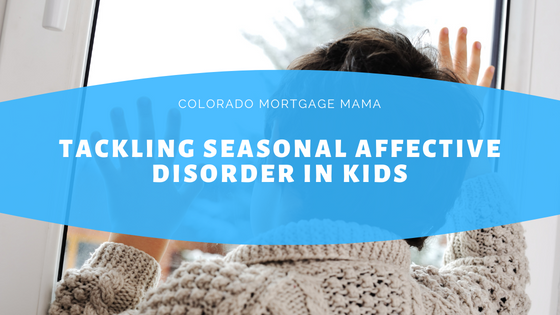
Tackling Seasonal Affective Disorder in Kids
Seasonal Affective Disorder (SAD) is a type of depression that typically occurs in the fall and winter months when there is less sunlight. While it’s less common in children than in adults, some children may experience symptoms of SAD during the winter months.
The exact cause of SAD is not fully understood, but it is believed to be related to a disruption in the body’s internal biological clock, or circadian rhythm. Exposure to sunlight helps to regulate the circadian rhythm, and when there is less sunlight during the fall and winter months, it can lead to changes in the brain’s chemistry that can contribute to feelings of depression.
Here are some signs and symptoms to watch out for:
- Changes in mood: Children with SAD may experience feelings of sadness, irritability, or moodiness. They may also feel more anxious or stressed than usual.
- Changes in sleep patterns: SAD can disrupt a child’s sleep patterns, causing them to sleep more or less than usual. They may also have trouble falling asleep or wake up frequently during the night.
- Changes in appetite: Children with SAD may experience changes in appetite, such as overeating or not eating enough. They may also crave carbohydrates and sweet foods.
- Fatigue and lack of energy: Children with SAD may feel more tired and lethargic than usual, even after a good night’s sleep.
- Difficulty concentrating: SAD can make it difficult for children to concentrate or focus on tasks, especially in school.
Depression is a serious mental health condition that can affect people of all ages, including children. Depression in children can look different from depression in adults, and may be more difficult to recognize. Here are some signs and symptoms of depression in children:
- Persistent feelings of sadness or irritability
- Loss of interest in activities previously enjoyed
- Difficulty sleeping or sleeping too much
- Changes in appetite or weight
- Low energy and fatigue
- Feelings of worthlessness or guilt
- Difficulty concentrating or making decisions
- Physical symptoms such as headaches or stomachaches
- Social withdrawal or isolation
- Thoughts of self-harm or suicide
It’s important to note that not all children with depression will experience all of these symptoms, and some children may experience different symptoms than those listed above.
If you suspect your child may be experiencing SAD, it’s important to talk to their doctor or a mental health professional. Treatment options may include light therapy, medication, talk therapy, or lifestyle changes such as exercise and spending more time outdoors. It’s also important to create a supportive and nurturing environment for your child, and to be patient and understanding as they work through their symptoms.
**********
